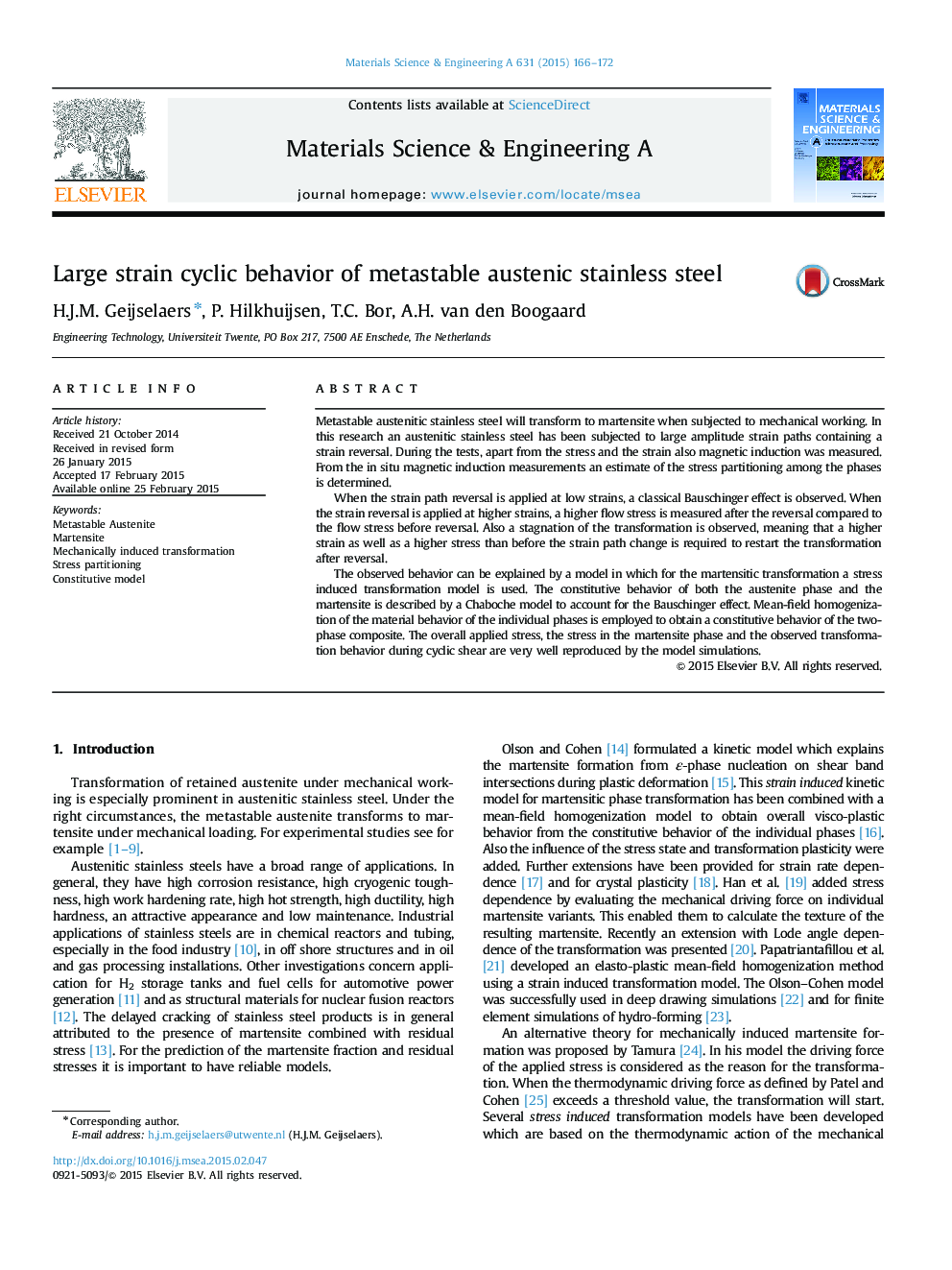| Article ID | Journal | Published Year | Pages | File Type |
|---|---|---|---|---|
| 1574419 | Materials Science and Engineering: A | 2015 | 7 Pages |
Metastable austenitic stainless steel will transform to martensite when subjected to mechanical working. In this research an austenitic stainless steel has been subjected to large amplitude strain paths containing a strain reversal. During the tests, apart from the stress and the strain also magnetic induction was measured. From the in situ magnetic induction measurements an estimate of the stress partitioning among the phases is determined.When the strain path reversal is applied at low strains, a classical Bauschinger effect is observed. When the strain reversal is applied at higher strains, a higher flow stress is measured after the reversal compared to the flow stress before reversal. Also a stagnation of the transformation is observed, meaning that a higher strain as well as a higher stress than before the strain path change is required to restart the transformation after reversal.The observed behavior can be explained by a model in which for the martensitic transformation a stress induced transformation model is used. The constitutive behavior of both the austenite phase and the martensite is described by a Chaboche model to account for the Bauschinger effect. Mean-field homogenization of the material behavior of the individual phases is employed to obtain a constitutive behavior of the two-phase composite. The overall applied stress, the stress in the martensite phase and the observed transformation behavior during cyclic shear are very well reproduced by the model simulations.
